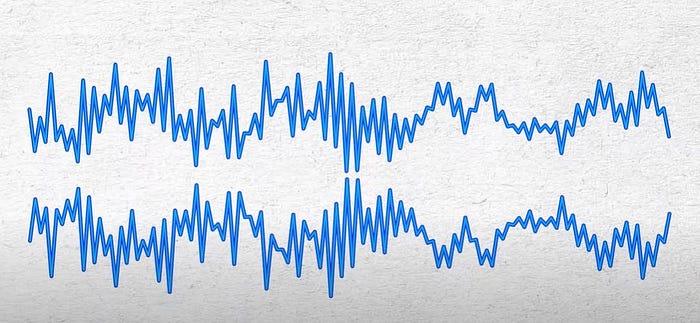How do Noise Cancelling headphones work?
I use Bose QC 35 noise-canceling headphones and I genuinely like it (not a promotion!). It uses Active Noise Cancellation. I came across a patent file for the same, and here is how it works.
15-second answer on how it works:
Headphones with built-in microphones capture ambient noise. A processor analyzes and generates an inverted sound signal, causing destructive interference. This enables clear playback of intended music without external disturbances.
How it works?
Your ears naturally pick up the sound from the speakers which has the intended music, but also the external noise. The noise looks like shown in Figure 1 (Left). The amplitude is plotted here. So how do we cancel this external noise?
Here is the twist, headphones also have one or more microphones (Figure 1, Right) in them even if you’re not using them to speak. Go take your headphones and look at it right now! Microphones basically look like a matrix of holes on the exterior. These pick up all the sound/noise from the external environment.
By analyzing the waveform of the sound using a processor, the speakers produce a sound that is sent 180 degrees out of phase with the sensed noise signal. This is played on top of the music/audio that was originally going to be played. Thus, when the noise signal and the new signal that is exactly inverted are added, they cancel out each other (aka destructive interference). Hence, the original music alone can be heard without any noise.

The sound wave on the top is the external noise. The one at the bottom is what is produced by the speaker to cancel out the noise after analyzing it! So now we have the original audio playing from your device in your ears without any noise. And this is how noise-canceling headphones work!
Caveats:
There are some caveats though. The consistent noises and low-frequency sounds are better filtered by the headphones. This is the reason car-honking sounds do not get filtered in most of the headphones. Also, the speaker and microphone need to be positioned close by. Because the noise that reaches our ears will not be exactly the same as that reaches the microphone. However, the noise waveform that reaches the microphone is taken as a reference to produce an inverted sound waveform.
Reference: Patent file number US 9445184
More From Me!
Understand the inner science of your gadgets with me, a Carnegie Mellon alumnus from my free newsletter, One Gadget at a Time. Join other friendly readers every other Wednesday from your inbox to see the world differently in just 3 minutes — regardless of your background! 🚀
